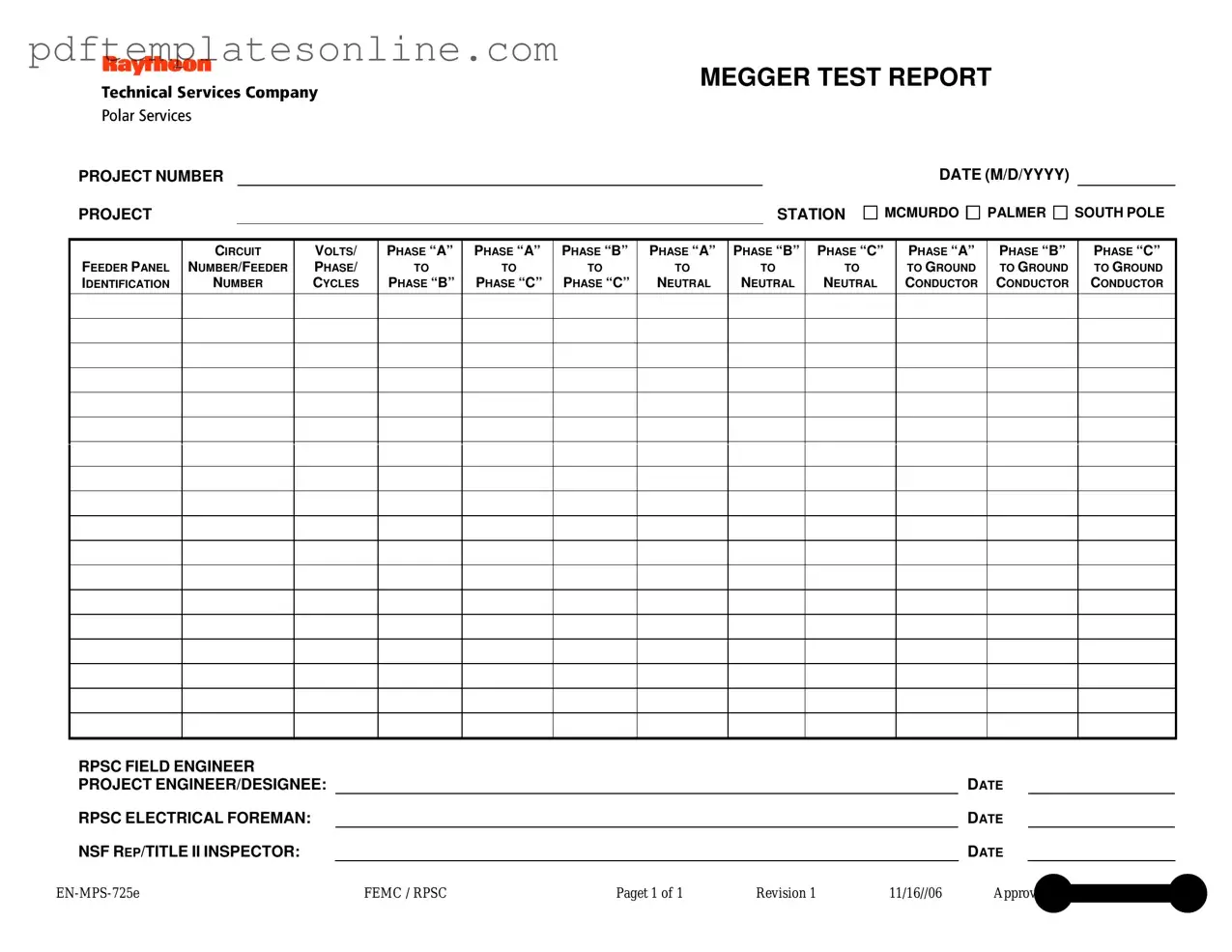Completing the Megger Test form accurately is crucial for ensuring reliable electrical testing results. However, there are several common mistakes that people often make when filling out this form. Being aware of these pitfalls can help avoid potential issues down the line.
One frequent error is neglecting to fill in the project number and project station. These fields are essential for identifying the specific test and its location. Without this information, it becomes challenging to track the test results or correlate them with the appropriate project documentation.
Another common mistake involves the date entry. Failing to write the date in the correct format (M/D/YYYY) can lead to confusion. This simple oversight may result in discrepancies when reviewing the test records later, making it difficult to establish a timeline of electrical testing.
People often overlook the importance of accurately identifying the feeder panel and circuit number. These identifiers are crucial for understanding which circuits were tested and for what purpose. Incorrect or missing information in these fields can lead to misinterpretation of the test results.
In the voltage and phase sections, it is common to see incomplete or inaccurate entries. Each phase should be tested and documented correctly. Omitting any phase or failing to record the voltage levels can result in an incomplete assessment of the electrical system’s integrity.
Additionally, individuals sometimes forget to include the RPSC field engineer and project engineer/designee signatures. These approvals are necessary for validating the test results. Without them, the report may lack credibility and could be questioned during audits or inspections.
Another mistake is failing to document the NSF representative/title and II inspector information. This step is vital for accountability and traceability. Missing this data can lead to complications if there are any disputes regarding the testing process or results.
Lastly, it is essential to double-check for any typographical errors throughout the form. Simple mistakes, such as transposed numbers or misspelled words, can cause significant misunderstandings. Taking a moment to review the form can save time and resources in the long run.
By being mindful of these common mistakes, individuals can ensure that the Megger Test form is completed accurately and effectively. Attention to detail is key in maintaining reliable electrical testing records.
